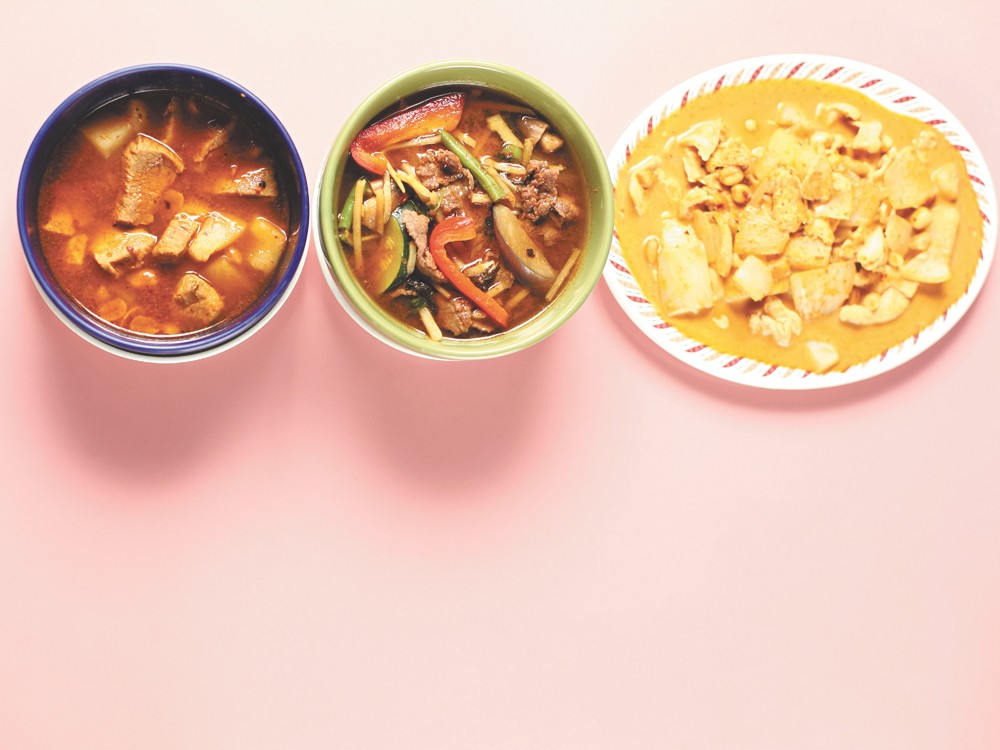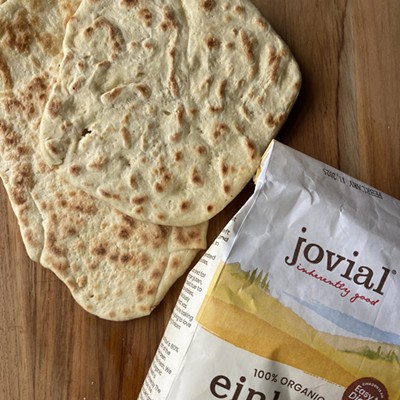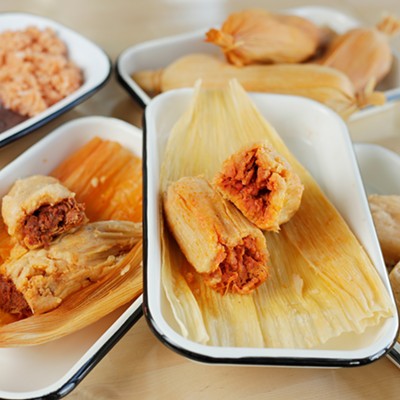In Thailand, you can tell a man by his use of coconut milk. And the way he likes his meat minced.
If you ask for your chicken ground, Val Chalard might ask if you’ve spent some time in the north, around the city of Chiang Mai, his wife’s childhood home. They make a lot of sausages there, and send much of their meat through a grinder.
If you want it chopped up — “chop, chop, chop, really fine,” the owner of Thai on First in downtown Spokane demonstrates — he’ll maybe think you’ve been hanging out in the northeast, up near the border with Laos.
Thailand is a crossroads of regions that are still deeply reliant on their indigenous crops, making its cuisine both internally distinct and flavored by the porousness of its borders.
The north is heavily influenced by Burma (aka Myanmar). The northeast by Laos. And, while the entire country is indebted to the technique of heavily spiced meats (curry) that spread overland from India during past centuries, the south is specifically indebted to India for the spices that arrived by ship to its ports.
Trade has its limits, though. Coconut milk is a major ingredient in southern Thai curries, where coconuts are ubiquitous, but almost completely absent from northern and northeastern cooking, where palms are nowhere to be found.
Calling Thai food “Thai food,” then, is like looking at a menu of smoked salmon, shrimp and grits and Chicago deep-dish pizza and calling it “American.” Technically true, but not very descriptive.
Val Chalard opened his first Thai restaurant here 25 years ago, and his menu is still among the most diverse in Spokane. We sat down recently with Chalard and his sons, Chang and Nick, to get a glimpse into the variety and nuance of Thai cooking.
Gaeng Hung-Lay — The North
Curry is called Gaeng (or Kaeng or Gang, depending on how you Anglicize it). Most curries you’ll find in local Thai restaurants are from the south, where dishes tend to be creamed with coconut milk and tinted yellow with turmeric, which made its way to the south by sea from India.
Massamun (also massaman, matsaman) curry, which begins creamy and aromatic before hitting you on the back of the tongue with earth and heat, legendarily has roots in Islam. There are stories of the dish coming from either Arab traders or 16th century Persian diplomats.
Whether that’s true or not, southern Thailand is strongly influenced by its peninsular neighbor, Malaysia, where the population is more than 60 percent Muslim and “there are a lot of Indian people,” Chalard says, “who eat a lot of [turmeric].”
Gaeng Hung-Lay — The North
If you were to close your eyes and just smell this dish, you might mistake this spiced pork curry (also: hang lay, hang-le) for a spicy Italian sausage. Complex and earthy, the dish smells of oregano and fennel. (Nam phrik ong, another northern dish, is said to resemble Italian Bolognese sauce.)
The Chalards try to list the spices that go into the deep red broth. “Seed of thyme,” Val says, “seed of cilantro” — coriander, in other words — “and um ...” The man looks at his son, Chang, and speaks in Thai. Chang looks puzzled.
“I don’t think there’s even an English word for it,” he says, then pulls out his smartphone. After a couple minutes of Googling he gives up, but Val remembers another: “I don’t know what it is in English,” he says, “but we say ‘Yee-lah.’”
Chang cuts in with spelling. “Yeah, but the ‘lah’ is ‘ra,’” he says. “Yi-ra” turns out to be cumin, which makes sense. The broth contains no coconut milk, so it’s deceptively thin for flavors and smells that are as earthy and pungent as an Italian pasta sauce mixed with a thick Indian curry.
Gaeng Pa’ — The Jungle
Stocked with vegetables and mushrooms, Gaeng Pa’ — “Jungle Curry” — is traditionally made from whatever is at hand. It has a clearer broth than other curries and is often eaten vegetarian, Val says, because in the jungle you don’t always have meat around.
“It’s like survivalist curry,” Nick Chalard says.
When you go into the jungle you want to pack light. “They carry the curry and some rice and that’s all you need,” Val says.
Along the way, you forage plants, kill some game if you can (in a nod to its traditional roots, Gaeng Pa’ is eaten in Thailand with wild boar). “You just grab whatever you can find,” Val says.
That usually includes makrut — kaffir lime — leaves, which give the curry a strong, citrusy smell and a tangy, almost sour flavor.
People generally don’t bring pots and pans along when they hoof into the jungle, either, Val says. They chop down a bamboo stock and fill the hollow section with rice and water. They then plug the open end with leaves and place it over a fire and voila: makeshift rice cooker.
“I remember doing that, before,” Val says laughing a little, “when I was a kid. It’s kinda fun.”
Thai on First • 411 W. 1st Ave • Open Mon-Fri, 11:30 am-1:30 pm; 5 pm-close; Sat, 5 pm-close • 455-4288
















